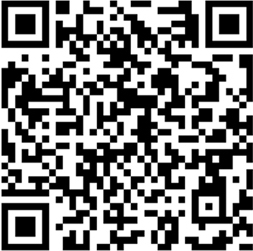Going slowly in a fast world and trying something new in a field as old as learning are just some of the challenges facing talent developers today.
Business takes its cues from the world economy, and talent development follows suit. Most trends in the profession arise from the same conditions that drive changes in business. No Ordinary Disruption, a new book from McKinsey & Company, cites these four: an aging world population, economic activity shifting to emerging markets, the pervasive impact and ubiquity of technology, and the global flow of capital, people, and information.
That's why we see companies striving for more innovation and less complexity. It's why there is so much hand-wringing about overwork and overconnectedness. It's what widens the global skills gap and drives employers to court the talents of introverts, women leaders, and unseasoned Millennials.
We've picked six trends arising from this whirlwind that are changing thinking and practices in talent development. They're not the only trends affecting the profession, but they are among the ones generating both ink and angst.
The boundaryless career
While not new, the boundaryless career—one unconfined to a single organization or career path—has a new manifestation in the on-demand or gig economy, as it is sometimes called. Much of the talk about the gig economy centers around Uber and similar companies whose technology platforms let people find short-term work using smartphone apps. Pundits predict the spread of Uber-like business models because they allocate talent efficiently and give workers highly prized flexibility. And because people who work in the on-demand economy are not technically employees, companies don't have to pay them benefits.
But evidence of a real increase in part-time, temporary, contingent, and contract work is hard to find, according to the U.S. Department of Labor. Government data show that around 95 percent of those who report having jobs are accounted for on the formal payroll of U.S. employers—little has changed from a decade ago.
And the share of Americans who are self-employed and unincorporated has slowly declined during the past decade, to about 6.5 percent of workers today, down from as high as 8.5 percent in the mid-1990s, according to Labor Department figures. Data from the U.S. Bureau of Labor Statistics show that Americans are less likely to be self-employed or hold multiple jobs than they were or did a decade ago.
The United States may not yet be a nation of gig workers, but people are restless. U.S. workers have an average of 10 employers in a lifetime. Even in Japan, where most men once expected lifetime employment at one company, Japanese men now average six employers. In the past, employees might lip-lock with a firm for years on end, merging their identities with the company and espousing its values. But that is changing, and it worries employers.
Employee satisfaction's bleeding edge
Near-panic over turnover and retention has led some firms to introduce new kinds of benefits to increase employee satisfaction. In 2014, Facebook and Apple began paying for women to freeze their eggs as a way to postpone pregnancy and concentrate on their careers. New parents at Facebook get four months of paid parental leave, reimbursement for day care and adoption fees, and $4,000 in "baby cash" after their child is born. Netflix offers unlimited parental leave during the first year after a child is born.
The American Pet Product Manufacturers Association reports that nearly one in five American companies allows pets in the workplace. Google, Ben & Jerry's, and Amazon were among the first to allow dogs at work.
At Netflix's California headquarters, vacation days and work hours aren't tracked. The company only measures what people get done; so as long as employees do their work, it doesn't matter when they work or how long they spend in the office. Companies such as Glassdoor and Virgin Group offer unlimited time off.
In 2014, Starbucks announced its College Achievement Plan, a program that allows all U.S. employees who work 20 hours or more per week to earn a bachelor's degree through Arizona State University's online program, with full tuition coverage.
At the Institute for Integrative Nutrition, a professional chef prepares a healthy organic lunch for the staff every day. Google's legendary free cafes and micro-kitchens at the Mountain View, California, headquarters promote interaction among employees whose desks are not near each other, according to company documents. Googlers can give feedback on the food, reputed to be excellent, through an internal system called "Foodback."
Sort-of-new performance management
Performance management is broken, declared a 2014 report from Deloitte. Companies need to "replace 'rank and yank' with coaching and development," advised the report by Talent Spot. More than half the companies surveyed said their performance management practices were not an effective use of time.
The authors noted that 70 percent of employees today work in service- or knowledge-related jobs in which skills develop over time. They recommend constantly developing these employees' capabilities rather than ranking them at a moment in time.
In 2013, Microsoft said it no longer would require managers to grade employees against one another and rank them on a scale of one to five. The forced ranking system meant a small percentage of Microsoft's 100,000 employees had to be ranked as underperformers. GE and Ford also have ended the practice of forced ranking.
A 2015 report from PwC found that "change is afoot" in performance management. Among the 27 Australian companies in the ASX 150 surveyed, 96 percent had recently changed their practices or were planning significant changes in the next 12 to 18 months. Most changes were not dramatic. Instead, companies were tweaking their processes but sticking to formal reviews and rating scales. Only a few took such steps as doing away with performance ratings and annual reviews or unhooking rewards from ratings.
Agricultural producer and distributor using employee surveys, found disparity between what performance management measured and how employees accomplished their work. The report showed that managers were reluctant to give candid feedback and viewed performance management as little more than an administrative drill. Employee satisfaction with the process improved after the company made such changes as recognizing and rewarding managers who were good at day-to-day performance management, and training managers in feedback, coaching, and two-way communication.
When research from Gallup and others showed that playing to employees' strengths brought more improvement than trying to correct weaknesses, many companies stopped trying to "fix" employees and started aligning them with work that fit their strengths.
Talent Spot argues that the fluid nature of work assignments, skills, and relationships makes it necessary to manage performance in real time. "It must be a system with a super light touch," he writes and "it must feel to the individual employee that it is a system 'about me, designed for me.'" And it should be strengths-based and focused on the future.
New learning movements
How people learn has intrigued psychologists and educators for decades, producing a slew of "isms" (behaviorism, constructivism, cognitivism) to explain and gain more control of the learning process. Technology has enabled some new learning movements.
Mastery learning, an instructional strategy pioneered by Benjamin Bloom in 1968, never proved to be scalable. Now Southern New Hampshire University has given new life to mastery learning through a self-paced online program called College for America. It uses and measures a set of 120 competencies and connects students with mentors in the workplace or local community.
There are no courses, no credit hours, no traditional faculty, and no grades. Instead, students develop an academic plan that outlines the key competencies they will master. Students show mastery of each competency primarily by completing projects that are scored by expert reviewers using a rubric. Students' capabilities are defined not by course numbers but by skills employers understand.
Crowdsourced learning is the process of obtaining ideas or content by collaboration among a large group of people. These days, that usually happens online. A Wikipedia list of hundreds of crowdsourced activities suggests you can crowdsource almost anything. Galaxy Zoo lets citizens classify galaxies. Foldit invites the public to play protein folding games. All such activities are fundamentally about knowledge acquisition and use what Clay Shirky—who studies the effects of the Internet on society—calls "spare brainpower" to de-institutionalize education.
In a 2010 Ted Talk, "When Ideas Have Sex," author Matt Ridley showed how, throughout history, the engine of human progress has been the meeting and mating of ideas to make new ideas. It's not important how clever individuals are, he says. What really matters is how smart the collective brain is.
Micro-learning is a movement that advocates small bursts of relevant learning instead of long, linear, paths to understanding. This approach makes perfect sense in an era of shrinking attention spans. Dianne Dukette and David Cornish at Kaiser Permanente recently found that humans have an average attention span of eight seconds, one second shorter than that of a goldfish.
Jeff Fernandez, writing for Learning Solutions magazine, describes micro-learning as a response to cultural and cognitive shifts. "Micro-learning ... is next-gen training for a workforce ready to consume it the way it does everything else: fast, small, and 'our way.' Easily accessible via devices such as mobile phones, tablets, and laptop computers in formats as varied as videos, blogs, games, quizzes, simulations, podcasts, or slideshows, micro-learning solves for dwindling attention spans, just at the time when technology is changing so rapidly that traditional L&D training methods can't keep up."
Machine learning—using algorithms to crunch huge amounts of data to recognize and predict patterns such as how a consumer will behave online, who will default on a loan, and which arrangement of pixels is a cat—is disruptive to an alarming degree.
Talent Spot thinks, "It's true that change is coming (and data are generated) so quickly that human-in-the-loop involvement in all decision making is rapidly becoming impractical. Looking three to five years out, we expect to see far higher levels of artificial intelligence, as well as the development of distributed autonomous corporations. These self-motivating, self-contained agents, formed as corporations, will be able to carry out set objectives autonomously, without any direct human supervision. ... The role of humans will be to direct and guide the algorithms as they attempt to achieve the objectives that they are given."
Simple and slow
Lily Tomlin once said, "The trouble with the rat race is that even if you win, you're still a rat." That might be the motto of a growing "slow" movement—slow food, slow living, slow news, and a host of other attempts to simplify life and work. Strategies for dealing with information overload, perpetual interruptions from social media, and 24/7 work cultures often involve paring away useless clutter to gain more time, energy, and space.
Complexity is killing innovation, slowing decision making, crippling IT efforts, and impeding business process. Those findings became the impetus for SAP's approach to business simplification—Run Simple. It's a marketing slogan as well as a business strategy, and it speaks to a trend that goes beyond IT.
Talent Spot thinks employees and managers must build in breaks that halt the whirlwind of nonproductive activity and offer breathing room for creativity and productivity. As reported in Workforce magazine, and in an essay in Time, the idea for a slow work movement came to Bacevice after observing patterns of effort by people working on specific projects. He found that blocks of time for actual work were largely missing. He says that slow work is about stepping away from nonproductive activity and allowing time for creativity. It can be as simple as alternating "mindful" (cognitively demanding) and "mindless" (cognitively facile) activities to give the mind a refreshing break.
Is there an app for that?
Mobile learning—let's call it any learning experienced through mobile technology, when needed, from anywhere—is exploding. Mobile overtook fixed Internet access sometime in 2014. There are more mobile devices in the world than people, and they're multiplying five times faster than we are. Mobile devices are a gateway to the world of apps, a type of software that lets you perform a specific task. Their specificity is a big part of their value.
Productivity apps—spreadsheets, calculators, calendars—are pretty common in business. So are apps that provide access to company data, and updates on products and processes. Less common but growing are apps that help people with abstract tasks. Knack, for example, creates game-based apps for making decisions, picking the best job applicant, and working in teams. One of its games, Wasabi Waiter, teaches restaurant staff to assess customers' moods based on facial expressions. Other Knack games test emotional intelligence, risk appetite, and adaptability to change. Managers can access game scores or watch employees play games to detect where they need help.
The Home Depot has created apps to help associates zero in on better customer service. "We knew we needed to transform our learning strategy to provide what we call 'in-aisle' learning, to augment the formal training our associates get in the back room, which can be a firehose of information," says Brandon Carlson, director of learning. Two such apps are a three-dimensional map of each store and a search engine to help customers find what they're looking for among 40,000 different products.
Our favorite apps are those that track trends in business and talent development.
















